
Roots
The quiet hours of night, when the world settles into slumber, present a unique challenge for textured strands. For centuries, across continents and cultures, individuals with coily, kinky, and wavy hair have instinctively understood this nocturnal vulnerability. They recognized that the mere act of resting could, without thoughtful intervention, compromise the vitality and structure of their hair.
This deep awareness was not born from scientific instruments or laboratory analyses, but from generations of observation, inherited wisdom, and an intimate connection to the natural rhythms of their own bodies and the world around them. It is a quiet understanding that the preservation of hair, an extension of identity and heritage, required a conscious, gentle effort even in repose.
Consider the very architecture of textured hair. Unlike straight strands that possess a relatively smooth, circular cross-section, coily and kinky hair exhibits an elliptical or even flattened shape. This unique geometry, paired with the cuticle scales that lie open or lift more readily at the curves and bends, renders these hair types particularly susceptible to external forces.
When hair rubs against coarse surfaces, like many common pillowcases, these lifted cuticles can snag, tear, and abrade, leading to frizz, tangles, and ultimately, breakage. The inherent dryness often associated with textured hair further compounds this vulnerability, as moisture, a vital component of elasticity and strength, can be readily wicked away by absorbent fabrics.
Traditional wisdom understood the nocturnal fragility of textured hair, long before science offered its explanations.
The fundamental principles guiding traditional nighttime hair protection are rooted in a profound respect for the hair’s delicate nature. They center on two primary objectives ❉ reducing friction and preserving moisture. Without these two pillars, the hair’s integrity during sleep would be significantly compromised. The methods developed over generations reflect an intuitive grasp of hair mechanics and material science, even if the language used to describe them was one of ancestral knowledge rather than academic discourse.

The Delicate Design of Hair Fibers
Each individual hair fiber, though seemingly robust, possesses a surprisingly delicate outer layer known as the Cuticle. This protective layer, composed of overlapping cells, functions much like shingles on a roof, shielding the inner cortex. In textured hair, the cuticle arrangement can be more irregular, with areas where the scales are naturally raised or prone to lifting due to the strand’s coiling pattern. This structural characteristic, while contributing to the hair’s unique beauty and volume, also renders it more prone to mechanical damage from friction.
The internal structure, the Cortex, provides strength and elasticity. When the cuticle is compromised by constant rubbing, the cortex becomes exposed and weakened, leading to a loss of moisture and protein. This can result in dullness, brittleness, and a noticeable decline in overall hair health. The nighttime hours, with prolonged contact between hair and sleeping surfaces, thus become a critical period for potential damage if not properly managed.
- Cuticle Integrity ❉ The outermost protective layer, easily disrupted by friction.
- Moisture Balance ❉ Essential for elasticity, often lost to absorbent materials.
- Mechanical Stress ❉ Repeated rubbing causes abrasion and breakage.
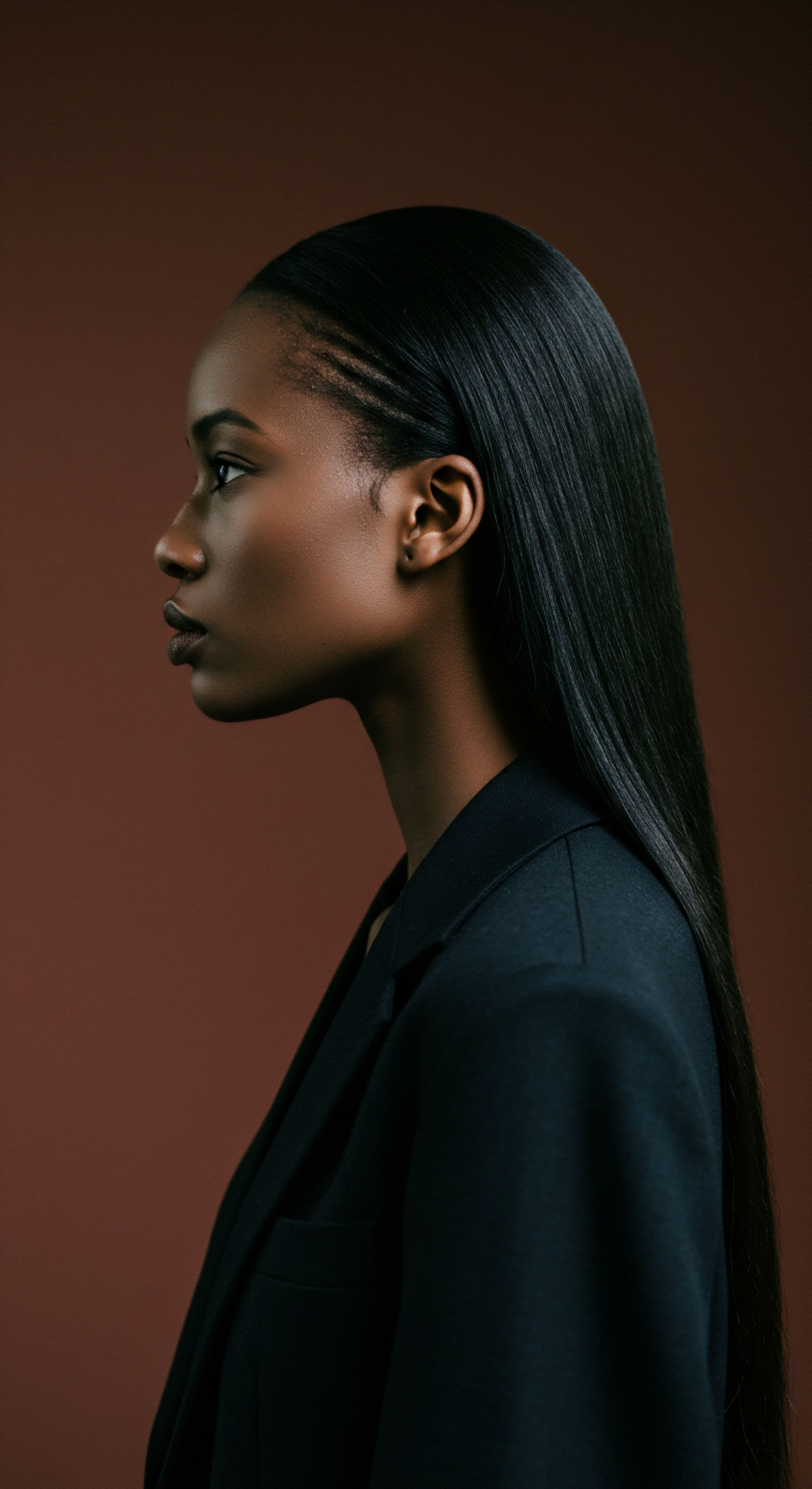
Understanding the Impact of Friction
Friction, the force that opposes motion between two surfaces in contact, plays a silent yet significant role in hair damage during sleep. As one shifts and turns through the night, hair strands are dragged and compressed against the pillowcase. The extent of this friction is heavily dependent on the material of the sleeping surface. Coarse fabrics, with their irregular fiber structures, create greater resistance and more opportunities for the hair’s cuticle to catch and tear.
This continuous mechanical stress, though seemingly minor with each individual movement, accumulates over hours of sleep. Over time, this repetitive rubbing can lead to weakened strands, split ends, and a general loss of definition. The visible signs of this nightly struggle often manifest as morning frizz or tangles that are difficult to smooth.
| Surface Material Cotton |
| Hair Interaction High friction, absorbent |
| Potential Impact Increased cuticle lifting, moisture loss, tangles |
| Surface Material Silk |
| Hair Interaction Low friction, non-absorbent |
| Potential Impact Reduced cuticle damage, moisture retention, smoothness |
| Surface Material Satin |
| Hair Interaction Low friction, less absorbent than cotton |
| Potential Impact Similar benefits to silk, more accessible |
| Surface Material Understanding material interaction is vital for nocturnal hair protection. |

Ritual
Stepping from the foundational understanding of hair’s delicate structure, we now consider the practical wisdom that has guided generations in safeguarding textured hair during the nocturnal hours. This is not simply about adopting a new habit; it is about recognizing and re-establishing practices that have long served as quiet guardians of hair health. These methods, passed down through families and communities, speak to an intuitive grasp of hair’s needs, transforming the simple act of preparing for sleep into a meaningful ritual of care. The practices explored here are a testament to the ingenuity and deep respect for hair that has characterized various cultures for centuries.
The core of these traditional methods revolves around creating a protective barrier and minimizing movement. By containing the hair and providing a smooth interface, these rituals significantly reduce the mechanical stress and moisture depletion that often occur overnight. They offer a tangible demonstration of how ancestral knowledge can provide robust solutions to contemporary hair challenges, inviting us to look beyond fleeting trends to enduring wisdom.

Braiding and Twisting
Among the most enduring and widely practiced methods for nighttime hair protection are braiding and twisting. These techniques serve to consolidate loose strands into cohesive units, thereby minimizing friction between individual hairs and preventing tangles. The very act of braiding or twisting locks the hair into a predetermined pattern, which helps to preserve curl definition and reduce the chances of frizzing.
Historically, these styles were not merely aesthetic choices but practical necessities for daily life, extending their utility into the sleeping hours. Whether it was simple plaits, cornrows, or two-strand twists, the goal remained consistent ❉ to secure the hair in a manner that would withstand the movements of sleep. The size and tightness of the braids or twists could vary, depending on the hair’s texture and the desired outcome, but the underlying principle of containment remained universal.
Braiding and twisting hair before sleep are time-honored methods that consolidate strands, minimizing friction and preserving definition.
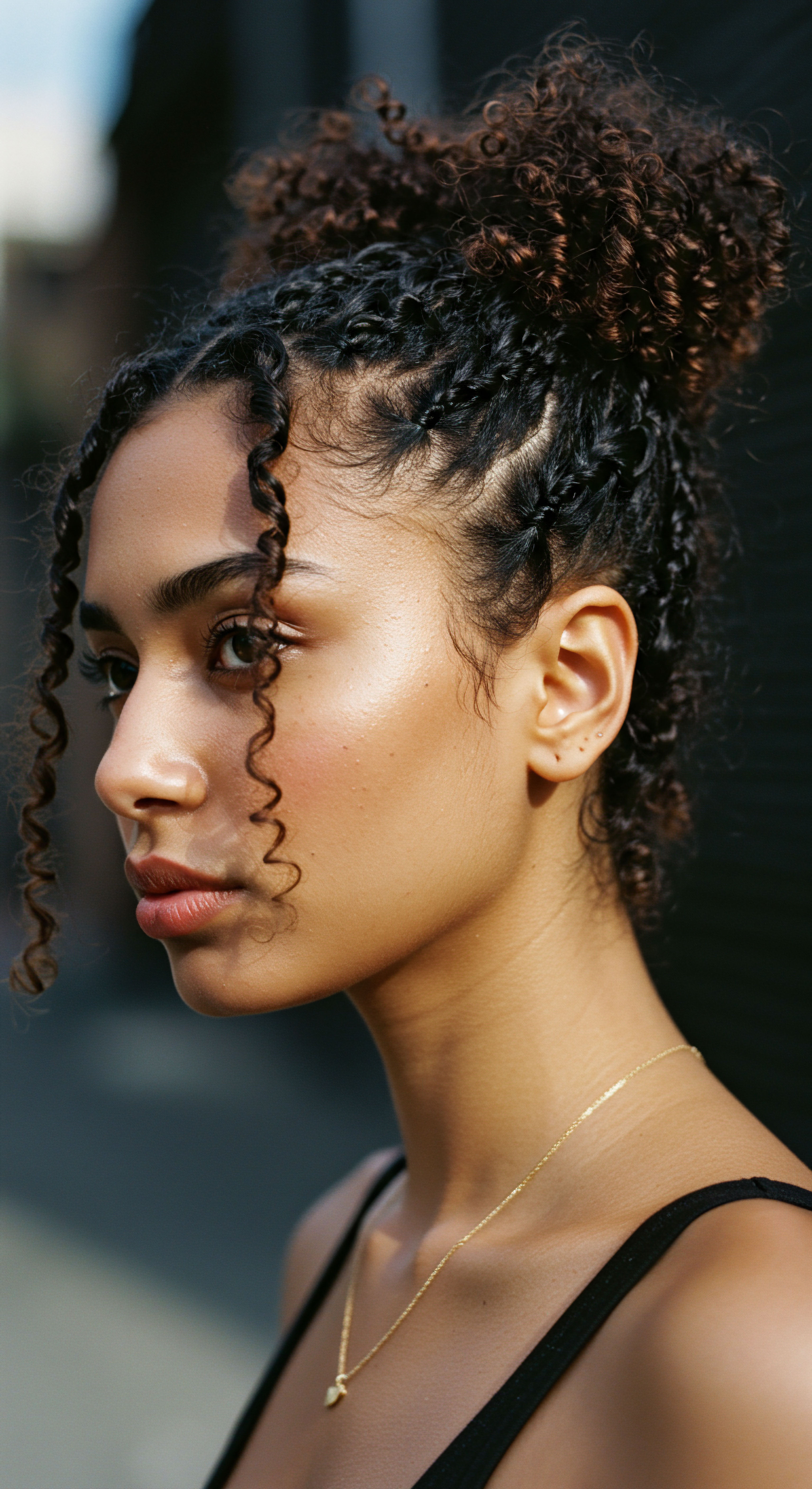
The Art of Sectioning and Tension
The effectiveness of braids and twists for sleep protection lies not only in the chosen style but also in the meticulousness of their creation. Proper Sectioning ensures that each part of the hair is evenly distributed and protected. Using gentle yet firm tension is crucial; braids that are too tight can cause scalp irritation and traction alopecia, while those that are too loose may not adequately contain the hair, allowing for excessive friction.
For highly textured hair, two-strand twists or larger braids are often favored, as they are easier to undo in the morning without causing further tangles. These methods allow the hair to dry and set in a stretched, yet not overly taut, state, contributing to elongation and reduced shrinkage upon waking. The process itself can become a calming, meditative part of a nightly routine, a quiet moment of self-care.

The Protective Veil of Head Wraps and Bonnets
Beyond styling, the use of head coverings has been a cornerstone of nighttime hair protection across many cultures. From intricately tied head wraps to simple fabric bonnets, these accessories provide a crucial physical barrier between delicate hair and abrasive pillowcases. The materials traditionally chosen for these coverings speak volumes about their protective function.
For centuries, women of African descent have utilized head wraps not only as symbols of identity and status but also as practical tools for hair preservation. The transition from daywear to nightwear often involved shifting to softer, less absorbent fabrics. The underlying principle here is to create a smooth, low-friction surface that allows the hair to glide rather than snag.
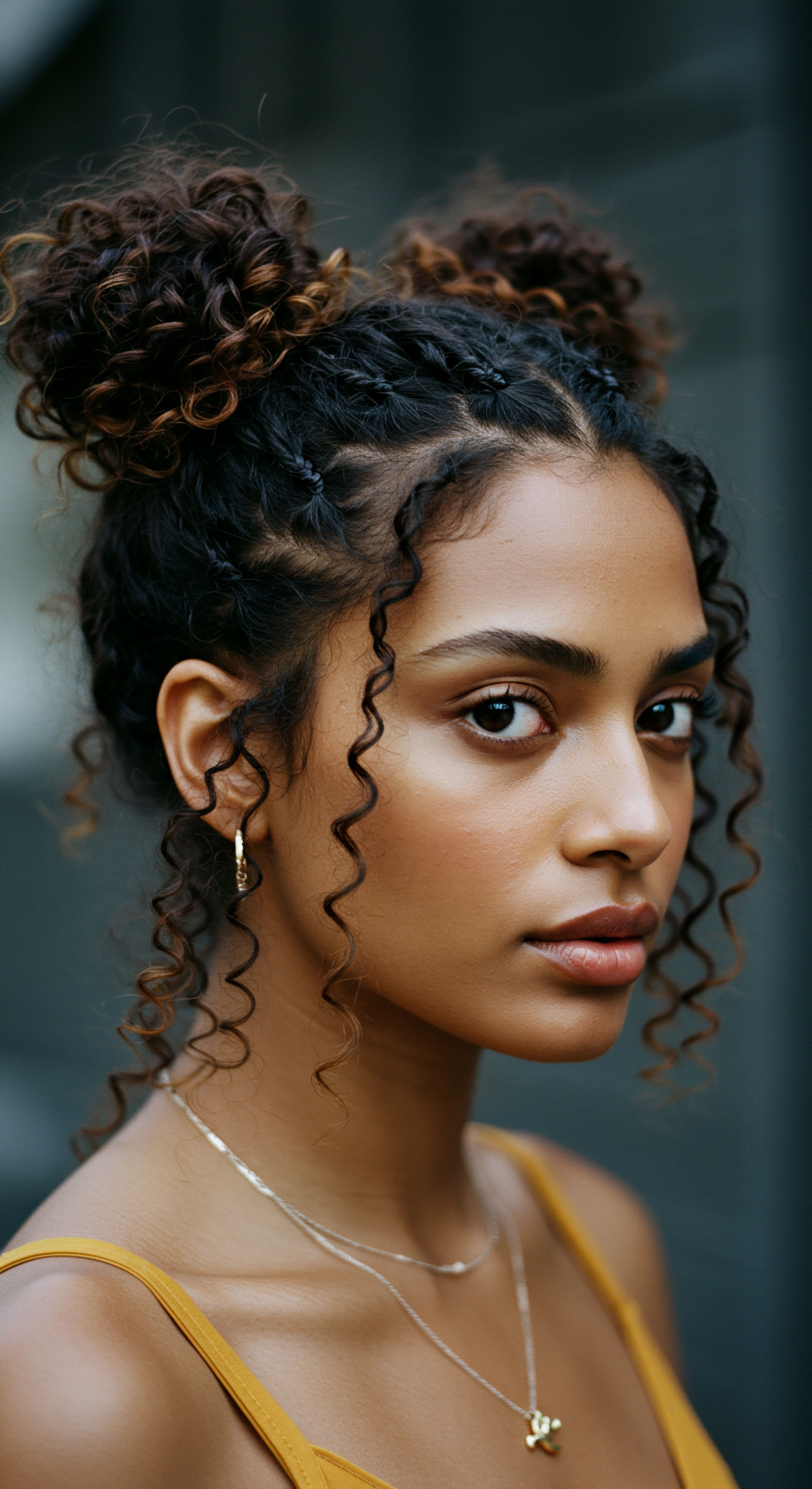
The Silk and Satin Legacy
While historical head coverings might have varied in material, the wisdom of using smooth fabrics has persisted. Modern adaptations of this tradition frequently employ Silk or Satin. These materials possess a tightly woven, smooth surface that significantly reduces the coefficient of friction when hair rubs against them. Unlike cotton, which has a porous, fibrous structure that can absorb moisture from the hair and create resistance, silk and satin allow hair to retain its natural oils and moisture.
A study published in the Journal of Cosmetic Science by Robbins and Crawford in 1991, for instance, detailed the significantly lower coefficient of friction of human hair against silk compared to cotton, suggesting reduced mechanical stress during sleep. This scientific observation lends credence to the long-held traditional belief in the superiority of smooth fabrics for hair protection. The minimal friction translates directly to less cuticle damage, fewer tangles, and preserved curl patterns.
The choice between silk and satin often comes down to personal preference and budget, with silk being a natural fiber and satin typically a synthetic weave that mimics silk’s smoothness. Both offer substantial benefits over traditional cotton pillowcases or less suitable head coverings.
- Silk Bonnets ❉ Offer exceptional smoothness, minimizing friction and moisture loss.
- Satin Pillowcases ❉ Provide a low-friction surface for those who prefer not to cover their hair.
- Traditional Head Wraps ❉ When tied correctly with smooth fabrics, offer comprehensive protection.

Relay
Having explored the fundamental vulnerabilities of textured hair and the practical rituals of its nighttime care, we now step into a more expansive domain, where science converges with cultural continuity, and the nuances of traditional practices are viewed through a broader lens. The seemingly simple act of covering hair at night or styling it for slumber carries a rich tapestry of meaning, echoing through generations and across diverse communities. This section invites a deeper contemplation of why these methods persist, not merely as quaint customs, but as deeply informed strategies that stand up to modern scientific scrutiny and resonate with cultural identity.
The resilience of these traditions is not accidental. They represent a collective intelligence, honed over centuries, responding to the specific needs of textured hair in environments that were often less than forgiving. To understand their enduring power, we must look beyond the surface technique to the underlying principles of hair science and the profound cultural significance embedded within these daily acts of care.
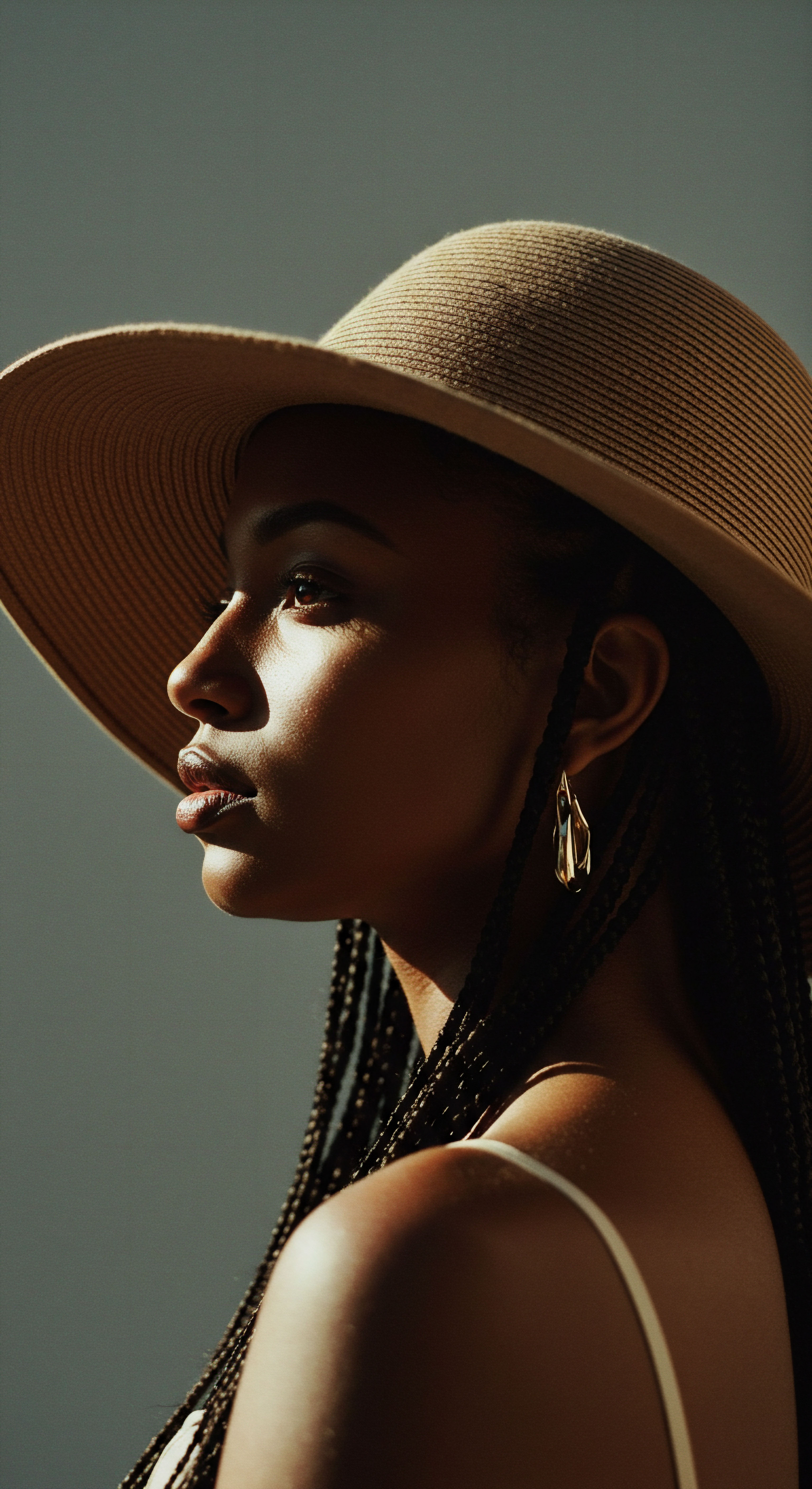
The Science of Preservation
The efficacy of traditional nighttime methods for textured hair is not merely anecdotal; it is grounded in observable scientific principles. The primary antagonists to hair health during sleep are mechanical friction and moisture depletion. Textured hair, with its unique structural characteristics, is particularly susceptible to both. The traditional practices directly address these challenges with remarkable precision.
When hair is braided or twisted, the individual strands are bundled together, significantly reducing the surface area exposed to abrasive forces. This containment minimizes the opportunity for individual hair fibers to rub against each other or against the pillowcase, thus mitigating cuticle damage. The less disturbed the cuticle, the better it can perform its protective function, retaining the hair’s natural moisture and integrity.
The enduring wisdom of traditional hair protection finds robust validation in modern scientific understanding of hair mechanics and moisture dynamics.
Furthermore, the use of smooth fabrics like silk or satin in bonnets or pillowcases dramatically lowers the coefficient of friction between the hair and the sleeping surface. Research in tribology, the study of friction, wear, and lubrication, confirms that surfaces with lower friction cause less mechanical stress on interacting materials. For hair, this translates to fewer snags, less breakage, and a preserved cuticle layer.
The smooth fibers of silk, for instance, do not absorb moisture from the hair in the same way that cotton fibers do, thereby helping to maintain the hair’s crucial hydration levels overnight. This preservation of moisture is paramount for textured hair, which is inherently prone to dryness due to its coiled structure hindering the natural oils from traveling down the hair shaft.

Cultural Continuity and Identity
Beyond the scientific rationale, traditional nighttime hair protection methods carry immense cultural weight. For many communities, particularly those of African descent, hair has always been more than just a biological appendage; it is a profound symbol of identity, heritage, and resilience. The rituals surrounding hair care, including those performed at night, serve as tangible links to ancestral practices and a continuation of cultural self-preservation.
The practice of wrapping hair, for instance, has roots in various African cultures, where head coverings signified status, marital state, or spiritual devotion. As these traditions traversed continents, they adapted, but their core purpose of protecting and honoring hair persisted. The nightly ritual of securing hair became a quiet act of defiance against narratives that sought to diminish natural hair, and a celebration of one’s inherent beauty. This continuity is not merely about preserving a technique; it is about sustaining a connection to a collective past and reinforcing a sense of self within a cultural continuum.
A poignant example of this cultural depth can be found in the historical records of the African diaspora. During periods of enslavement, the ability to care for and adorn one’s hair, even in secret, became a powerful act of resistance and self-expression. Hair was often hidden during the day but meticulously cared for at night, sometimes using rudimentary cloths to protect it.
This hidden labor of love underscored the deep connection to hair as a source of identity and dignity. This tradition, though evolving, continues to this day, with bonnets and wraps serving as a modern echo of those ancestral practices, protecting not only the hair but also a legacy of self-respect.
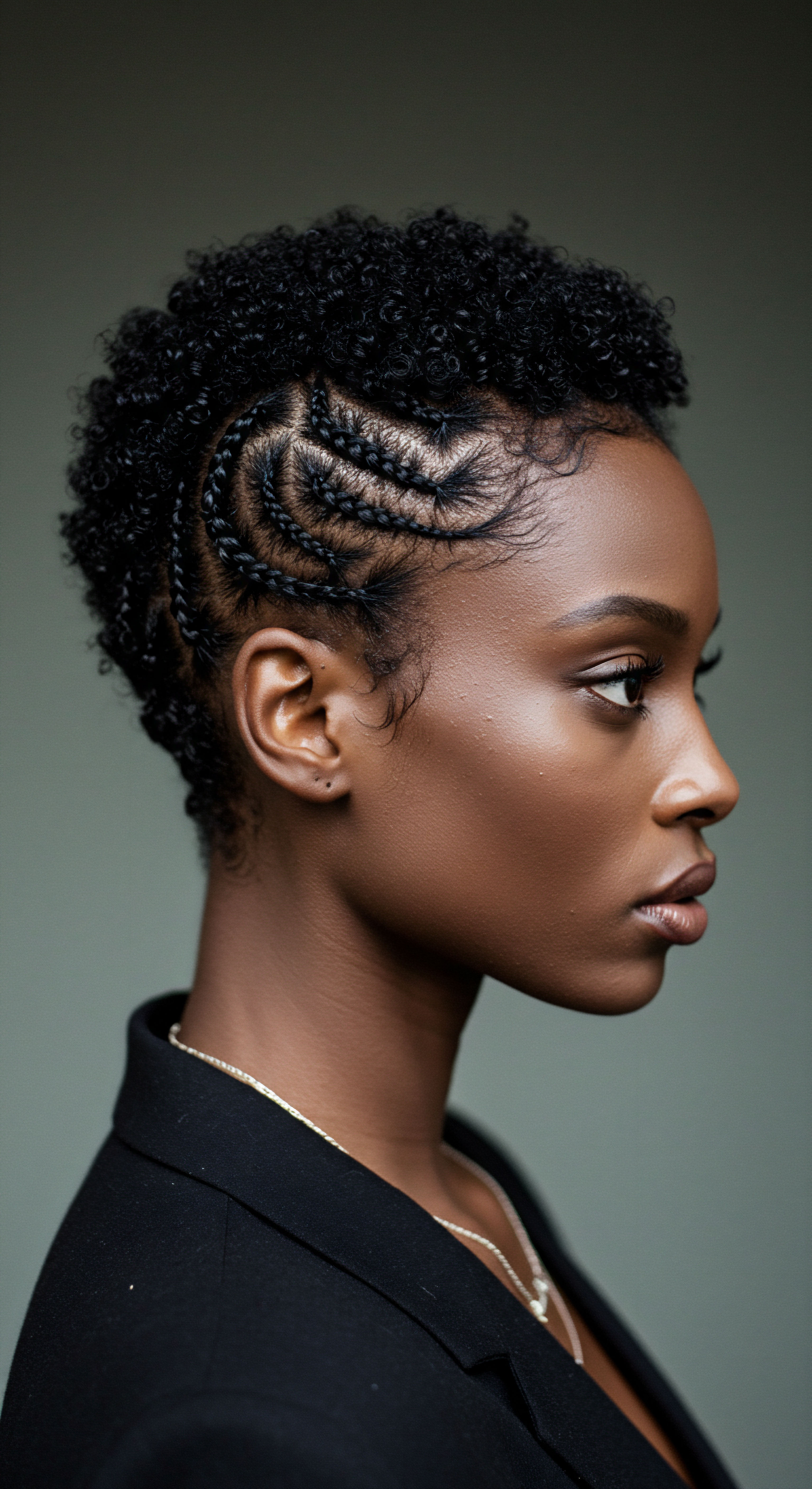
The Intersection of Health and Heritage
The effectiveness of traditional methods lies precisely at the intersection of hair health and cultural heritage. These practices are not simply about preventing physical damage; they contribute to a holistic sense of well-being. The act of caring for one’s hair, understanding its needs, and engaging in rituals passed down through generations, fosters a deeper appreciation for natural beauty and self-acceptance.
In an era where hair care is often dominated by commercial products and fleeting trends, the enduring relevance of traditional methods offers a grounding perspective. They remind us that the most effective solutions are often those that are simple, mindful, and deeply connected to our inherent needs and cultural roots. The knowledge embedded in these practices, though sometimes overlooked in modern discourse, represents a powerful, practical wisdom that continues to serve and protect textured hair.

Reflection
As the quiet settles each evening, the ancient wisdom of textured hair protection continues its gentle hum. These time-honored methods, far from being mere relics of the past, stand as a testament to the profound connection between human ingenuity, scientific insight, and cultural reverence. They whisper tales of resilient strands, nurtured through generations, reminding us that true care extends beyond the visible, touching the very core of identity and well-being. The nocturnal sanctuary for textured hair, shaped by the thoughtful application of braids, twists, and smooth coverings, invites a deeper appreciation for practices that have, for so long, safeguarded not only physical health but also a cherished legacy.

References
- Robbins, C. R. Chemical and Physical Behavior of Human Hair. Springer, 2012.
- Li, Y. and Zhang, C. C. “A Study on the Friction and Abrasion of Human Hair Fibers.” Journal of the Society of Dyers and Colourists, vol. 122, no. 5-6, 2006, pp. 268-272.
- Gamble, R. A. The History of Black Hair ❉ The Roots of a Cultural Movement. Peter Lang Publishing, 2010.
- Marsh, J. Black Hair ❉ Art, Style, and Culture. Rizzoli, 2018.
- McMichael, A. J. Hair and Scalp Diseases ❉ Medical and Surgical Approaches. CRC Press, 2013.
- Draelos, Z. D. Cosmetic Dermatology ❉ Products and Procedures. Wiley-Blackwell, 2010.
- Davis, A. Hair Story ❉ Untangling the Roots of Black Hair in America. St. Martin’s Press, 2001.
- Goodman, R. African Hairstyles ❉ Styles of Yesterday and Today. GoodYear Books, 1993.